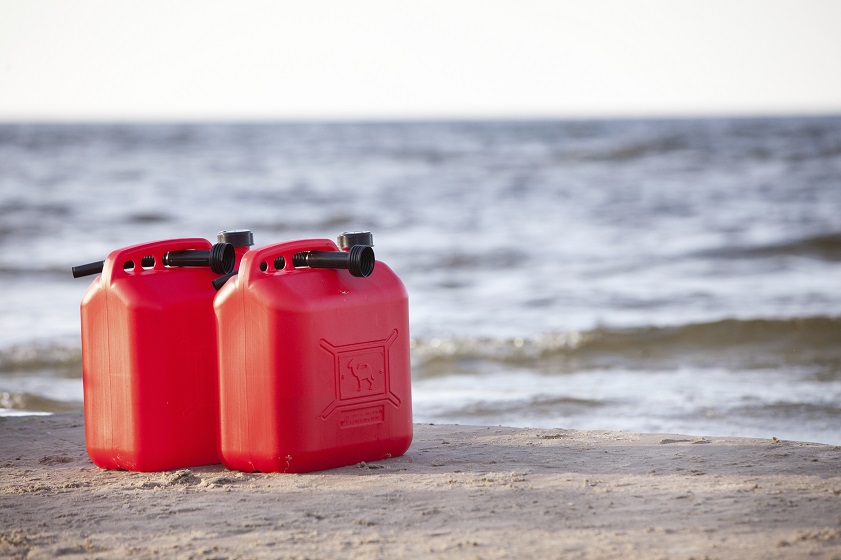The thing with caravan maintenance is that prevention is better than the cure. We’ve previously discussed caravan maintenance and servicing on Without A Hitch, but because it’s a big issue that affects us all, we thought we’d hit-up an expert who does this kind of thing for a living.
Andrew Gallop, managing director of Hardings Swift Caravan Services in Kilsyth, Victoria, has been in the caravan maintenance business for 25 years. He’s observed the caravan industry’s growth over the past decade as caravanning transitioned from the infrequent family holiday to a complete way of life. “The industry has boomed in the last 10 years. With Grey Nomads, for example, it has become part of their retirement, so people are doing more kilometres – often 10,000km per year.”
Andrew highlighted the fact that older caravans haven’t been built with this increased mileage in mind and need more scrutiny during a service.
Top three maintenance checks
We asked Andrew to point out the top three caravan maintenance areas that need checking for wear whenever you service your caravan or have it serviced professionally:
1. Wheel bearings
Bearings need to be checked every 10,000km or two-to-three years. Caravan wheel bearings need to be checked more frequently than car wheel bearings as, unlike car bearings, you won’t be able to hear the grinding noise that indicates failing bearings.
Caravan wheel bearings are also more prone to early wear.
2. Brakes
“Electric brakes are fantastic and are designed to sit idle for months, but they need lots of good servicing.”
- Brake linings – cracks can appear in the linings when they get too hot. Overheating is sometimes caused by leaving the handbrake on accidentally, or using non-inertia (non-motion sensing) brake controllers, which may provide too much power to the electric brakes.
- Magnets – if you use a good-quality inertia (motion sensing) brake controller, electric brake magnets will last around 50,000km under normal conditions.
Andrew says any brake work that is done must be tested by running it around the block on the actual tow vehicle so you can tell that everything works and feels right.
3. Suspension
It’s really easy to forget about suspension as it’s often tucked away out of sight. There are many types available, but Andrew points to older types as ones that require a bit more observation:
- Leaf spring. This is the most common type of suspension. At each end of the leaf spring is an eye mount. Andrew says that older leaf springs should be checked every 10,000km for cracks in the spring itself and wear on bolts, bushes, pins and any other moving component
- Slipper leaf springs. Practically the same as a regular leaf spring, the slipper type reduces wear by replacing the rear eye mount with a slipper mount. The slipping motion reduces the stress on the spring itself.
- Tandem axles. The rocker suspension system commonly used in tandem axles could be prone to bush and pin wear, which can break springs. Andrew recommends the rocker roller suspension system instead, as it generally suffers less bush and pin wear, and is less likely to break springs.
- IRS suspension. Using torsional resistance instead of springs, Independent Rubber Suspension is a simple system that has been used in Australia and Europe for many years. The only maintenance it requires is being re-rubbered after several years.
Other areas
Andrew nominated a few other issues you or your service centre should look at:
- Under carriage. Draw bar and chassis cross members should be checked for fatigue cracking. It’s difficult to detect cracking, but service centres, such as Hardings Swift Caravan Services have truck hoists that allow mechanics to get a good look.
- Tyres. If these are more than six years old, they are at risk of blowing out and should be replaced.
- Wheel nuts. These should be checked at every service to ensure they’re torqued correctly.
- Windows and body work. Andrew notes that even in new caravans he still sees rot as a result of water ingress so jump on it as soon as you detect it. Small gaps in bodywork can be resealed with a bit of silicone.
- Batteries. “They cost $300 each, so when not in use they need to be left permanently on a smart charger or solar charger” to avoid them deteriorating.
- Hot water system. The sacrificial anode, which prevents corrosion in the boiler, needs changing every two to three years.
Underlining caravan maintenance, above time and cost, is safety. Much of the key maintenance areas discussed here directly impact on the proper performance and therefore safety of your vehicle.
Speaking of maintenance, here’s how to fight mould.





